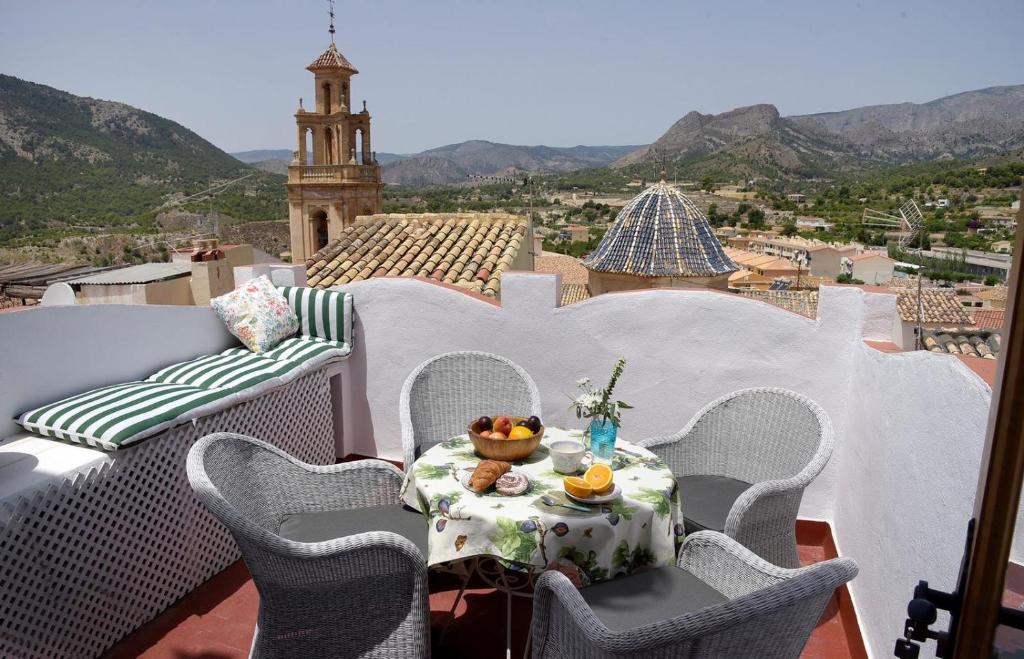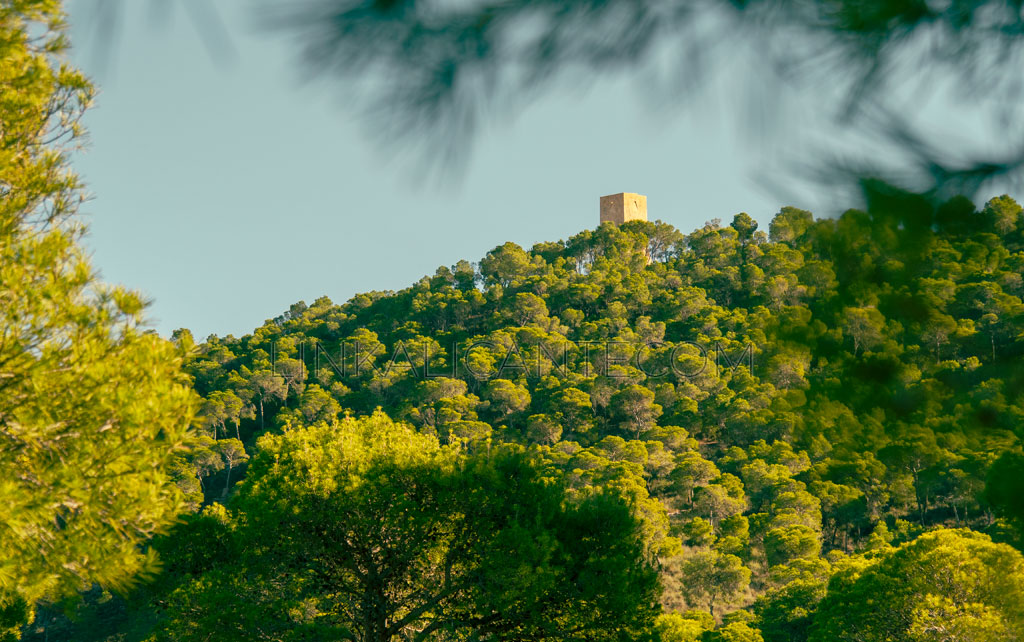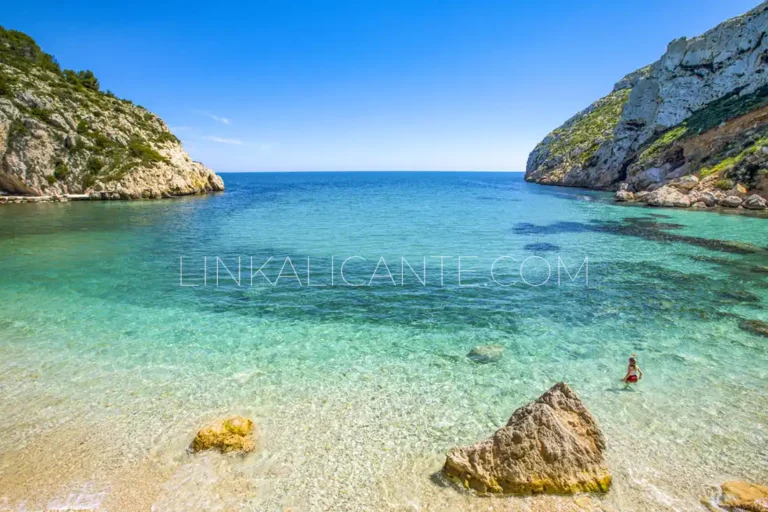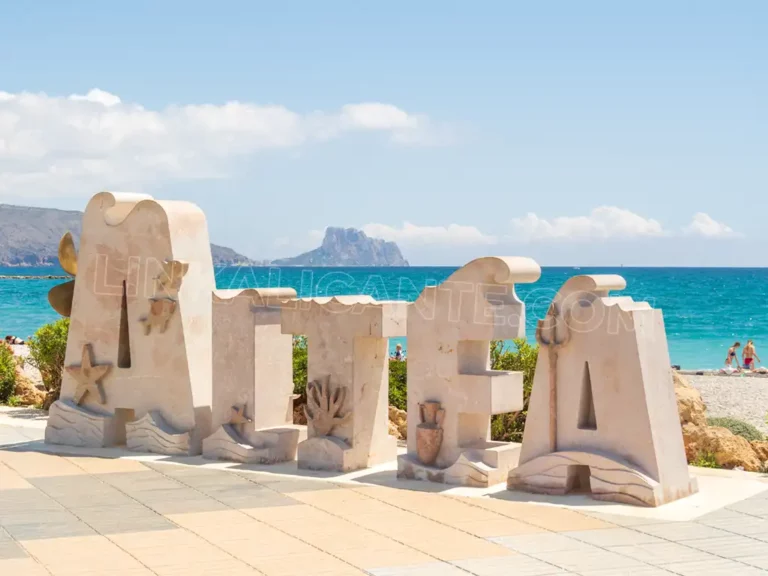At the foot of the stony giant of Puig Campana we visit one of the most charming villages in the province of Alicante: Finestrat.
In this article we tell you the best plans in this very mountainous municipality that overlooks the Mediterranean from the small Cala Morales. Let’s go, it’s time to discover what to do and what to see in Finestrat!
Índice del Artículo
ToggleFinestrat: between sea and mountain

Finestrat is one of those towns in Alicante that brings together the very essence of La Terreta in its municipality: Sea and Mountain. In communion or facing each other, like two eternal lovers condemned to an impossible love, it all depends on the moment and the viewer’s vision.
Yes, Finestrat is Mountain, because the old part of the town sits at the foot of the majestic Puig Campana, surely the summit with more character of the entire province of Alicante. Finestrat is also Sea; ours, the Mediterranean. And it is that the municipal term of the population penetrates in wedge shape up to the Cala Morales – usually known as Cala de Finestrat -, being one of the smallest exits to the sea of all the Spanish municipalities.
Finestrat is also, unfortunately, the living image of human barbarism. A good part of its municipal area has been metastasized by excessive urbanizations and golf courses that extend from the slopes of the battered Sierra Cortina to the sea, displaying a tragic representation of the urbanistic cruelty that plagues the coast of the southeastern peninsular.
In this article I will talk about the natural and cultural attractions of Finestrat, bypassing all the barbarism of the construction that in my opinion does nothing but spoil the essence of one of the most beautiful villages on the Costa Blanca. Will you join me?
What to do and see in Finestrat
1. Stroll through the old town of Finestrat.

The charming historic center of Finestrat is quite small and can be covered on foot in a morning or afternoon. The time spent will vary, of course, depending on how much you entertain yourself and whether you want to visit its museum, church, etc. To soak up its history and legends, my advice is to book this free tour in Finestrat and let yourself be guided through its narrow streets of Moorish origin.

If you decide to visit it on your own, take note of the following sites: the Church of Sant Bartomeu (18th century), the Font del Carré Park, the Town Hall, the Archaeological and Ethnological Museum or the Castell Auditorium. The latter is so called because in the highest part of the town was once located precisely that: a castle. Today nothing can be seen of this defensive construction, however it is worthwhile to climb the cobblestone streets to admire two treasures: the Ermita del Santo Cristo del Remedio and a viewpoint with magnificent views that you will have to contemplate with your own eyes.
Accommodations in Finestrat

✓ La Campana de Finestrat. With three bedrooms and unsurpassed views of the village and the surroundings.
✓ Casa Figueretes. A charming rural house in the old town of Finestrat
✓ Casita de Luna. Country house located between Finestrat and Orxeta.
2. Finestrat Cove

La Cala de Finestrat is the culmination towards the Mediterranean Sea of the municipality of the town. This beautiful beach -if we ignore the urban barbarism behind it- is located in the heart of a small bay between two important and historic defensive watchtowers of the coast of the Marina Baixa region, which I encourage you to visit in the following points of this article.
La Cala de Finestrat is an urban beach with Blue Flag and all services. It is about 300 meters long and is ideal for water sports.
3. Site and viewpoint Tossal de la Cala

The Tossal de la Cala is a small hill that separates the Cala de Finestrat from the Poniente Beach in Benidorm. This strategic mountainous formation, already in the municipality of the tourist giant, was the location chosen centuries ago for the construction of a castellum of Roman origin. I recommend walking up from the beach itself in this urban route between luxury apartments and visit the archaeological site of El Tossal and the fantastic views that can be seen from the top.
4. Aguiló Tower Route

If in the visit to the Tossal de la Cala we have the opportunity to recall the Roman history of these places, the simple hiking route that leads us to the Torre del Aguiló (La Vila Joiosa) takes us to a more recent era: the XV-XVII centuries, a time when the incursions of pirates and corsairs were very frequent, which terrorized the coastal populations with their kidnappings and looting.
These terrible attacks are the origin of such popular festivals as the Desembarco de La Vila Joiosa, a festival of International Tourist Interest that commemorates those events that took place in turbulent times when no one in their right mind wanted to live near the coast…
We can start the route to the Torre del Aguiló in the same Cala de Finestrat, from where we ascend a pleasant dirt path in the shade of the pine trees that mark the path. Once at the top, in addition to enjoying magnificent views, we can continue the route of an old cattle track, the Colada de la Costa de La Vila Joiosa, which will allow us to know the Cala del Racó del Conill -one of the most beautiful coves of the Costa Blanca-and the no less beautiful Playa del Torres.
5. Puig Campana Route

I’m not going to fool you: the hiking route that starts at the Font del Molí de Finestrat and climbs to the 1408 meters high Puig Campana is not suitable for everyone. In fact, it is a route of high difficulty, since it requires overcoming a positive difference in altitude of more than one thousand meters. The circular excursion around the mountain, which will take you to the Coll del Pouet, an emblematic crossroads on the north face of the great limestone mass, is somewhat more accessible. You can check all the information about this route in my article about the ascent to Puig Campana.
And if climbing is your thing, also in Puig Campana you will find some of the best climbing routes on the Costa Blanca.
The Legend of Puig Campana

It is more than likely that the origin of the name of the town comes from the characteristic window-shaped cut that can be seen in the Puig Campana, and more specifically in its secondary summit, the Pic Prim. Do you know the legend of the Giant Roland in Puig Campana?
Video about Finestrat
To finish this article about Finestrat, I leave you with this video that is part of the series “Alicante village by village” which includes some of the main attractions of the town.
Links of interest
If you go with children, you can try to follow the clues of the game Discover Finestrat in your visit to the historic center of the town.
Do not miss...

The 10 Best Coves in Alicante + Map
Discover the 10 Best Coves of Alicante and its location map in this tour from north to south along the coast of the Costa Blanca.

BENIDORM: 12+1 Alternative Plans for Nature, Culture and History
Discover and be surprised by Benidorm thanks to these original plans and a different point of view of the city of skyscrapers.

What to see in ALTEA, must-see places and plans
What to see in Altea: beautiful places, beaches, routes, gastronomy and the best plans to enjoy the most beautiful coastal town in Alicante.

